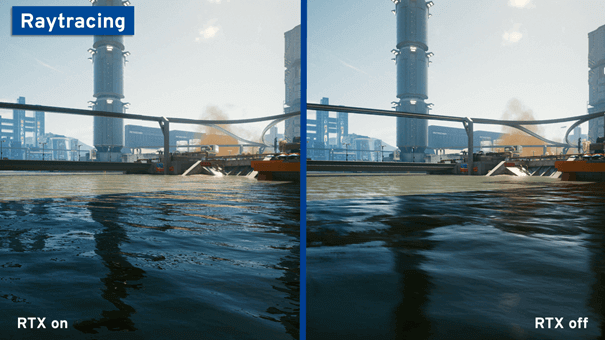What is Ray tracing?Ray tracing is a technique used in graphic design to produce graphics by following the route that light follows via individual pixels. The effects of light rays on the items they come into contact with are simulated by ray tracing. Ray tracing usually results in higher-quality, more realistic images, but it takes longer to process and uses more CPU resources. Therefore, ray tracing is most frequently employed to produce still images. It is a method for simulating the movement of electromagnetic (optical) wavefronts through a system in photonics/optical engineering software. Rays are drawn as lines from discrete locations on surfaces that represent the position of the local wavefront as it moves through an optical system. In homogeneous media, these rays that are perpendicular to the local wavefront move in straight lines. According to Snell's Law, the rays will reorient at refractive limits and reflect at boundaries in accordance with the Law of Reflection. The vector grating diffraction equation predicts that they will reverse direction at diffractive interfaces and within inhomogeneous media using gradient index material equations. The equations governing scatter will be adjusted as rays come into contact with scattering surfaces. Intensity, polarisation characteristics, optical path, and the physical path can be multiplied by the medium's refractive index, and also be connected to rays, and can be suitably altered at interfaces. 
What issue is resolved by ray tracing?It is feasible to mimic how optical wavefronts behave across diverse media using ray tracing. The quality of the output image for image-forming systems, the distribution of light for illumination systems, and many other things can be determined using ray tracing. To obtain desired results, ray tracing in conjunction with optical system parameter optimization can automatically enhance imaging or illuminating performance. The importance of ray tracing in optical simulation.In comparison to more exact methods of electromagnetic wave propagation, ray tracing is a useful simulation approach because of its general processing economy and relative correctness (for many cases). Ray tracing can be used in conjunction with other computational algorithms to imitate physical phenomena more precisely. As an illustration, it is possible to follow the intensity (amplitude**2) and phase (optical path) of a grid of rays as they are traced to the exit pupil of an optical system. Image structure intensity, including diffraction, will be simulated using a Fourier Transform of the complex field (amplitude and phase). How is ray tracing implemented?Individual light rays' paths from a fictitious light source to a fictitious camera lens are simulated by software known as a ray tracer. The virtual light ray may interact with real objects like metal, glass, or water as well as volumetric atmospheres like fog or smoke. Each of these items is conceptualised and modelled by designers and engineers in order to influence how the scene appears when displayed by a ray tracer. Advanced ray tracers may replicate complicated light behaviours by adding extra calculations like interreflection, radiosity, and caustics. GPU-based ray tracing.Ray tracing is typically carried out by the CPU rather than the GPU. To improve real-time graphics applications like video games, a GPU's hardware is built to produce as many frames per second (FPS) as it can. Ray tracing frequently takes a long time and sacrifices photorealistic quality for real-time performance. As a result, neither ray tracing software nor GPU hardware has been created with the intention of performing ray tracing. On the other hand, NVidia unveiled their new Turing graphics processing architecture, which supports real-time ray tracing, on August 13, 2018. At the end of 2018, the Quadro RTX, the first GPUs to employ the Turing architecture, are anticipated for release. Ray tracing: Is it worth it?Ray tracing has advanced significantly because it was first introduced in Battlefield 5, and it is currently supported by other games. Ray tracing is really shined in this game with mountain ranges evident in the frozen lake's reflection and flames glinting off the iron surfaces of the cannons. In particular, if they are interested in a game that currently supports ray tracing and won't put too much load on their PC, we advise gamers who are interested in ray tracing to examine their own internals and determine whether their present setup is workable. The upcoming Sony and Microsoft consoles are reliable systems that support ray tracing in a variety of games for anyone else who is curious yet hesitant to look at GPUs. Ray-tracing applications:Ray tracing technology is currently supported by more games than ever thanks to products from AMD and Nvidia as well as popular platforms. However, not every PC or console game will support the technology, and some titles only permit the capability in specific game modes or regions.
Next TopicWhat is a Touchpad
|
 For Videos Join Our Youtube Channel: Join Now
For Videos Join Our Youtube Channel: Join Now
Feedback
- Send your Feedback to [email protected]
Help Others, Please Share










